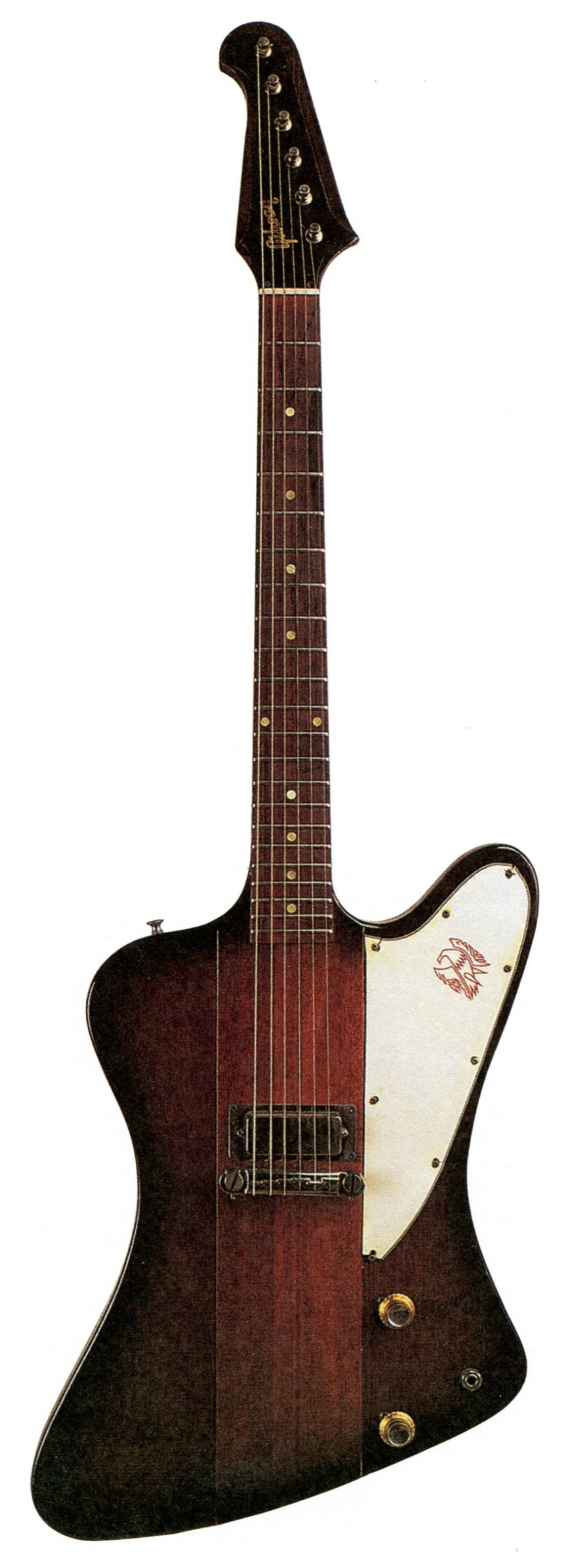Gibson Firebird I (reverse body)

Ray Dietrich was an automotive designer, famous for his work with Chrysler, Packard and Lincoln, who by the early 1960s was retired and living in Kalamazoo, Michigan, home of Gibson guitars. Gibson president Ted McCarty invited Dietrich to design a guitar, and the result was the Firebird series of 1963.
The original version of the Firebird is known as “reverse body”, and that is exactly what Dietrich did. He reversed the conventional solidbody shape, making the upper trable horn longer than the bass horn and extending the lower bass bout. The peghead, too, was reversed, with all the tuners on the treble side. To make this configuration workable, Gibson used banjo-style tuners rather than the standard right-angle design.
The heart of Dietrich’s design was a nine-ply neck that continued through the body. This “neck-thru” design eliminated the neck joint and provided a strong, unbroken connection between neck and body – a critical element in solidbody performance.
Gibson introduced four Firebirds in 1963, with the single-pickup Firebird I as the basic model.
